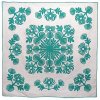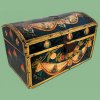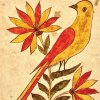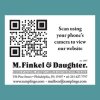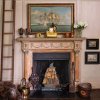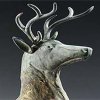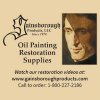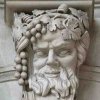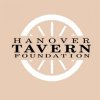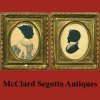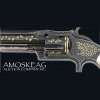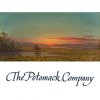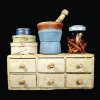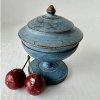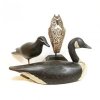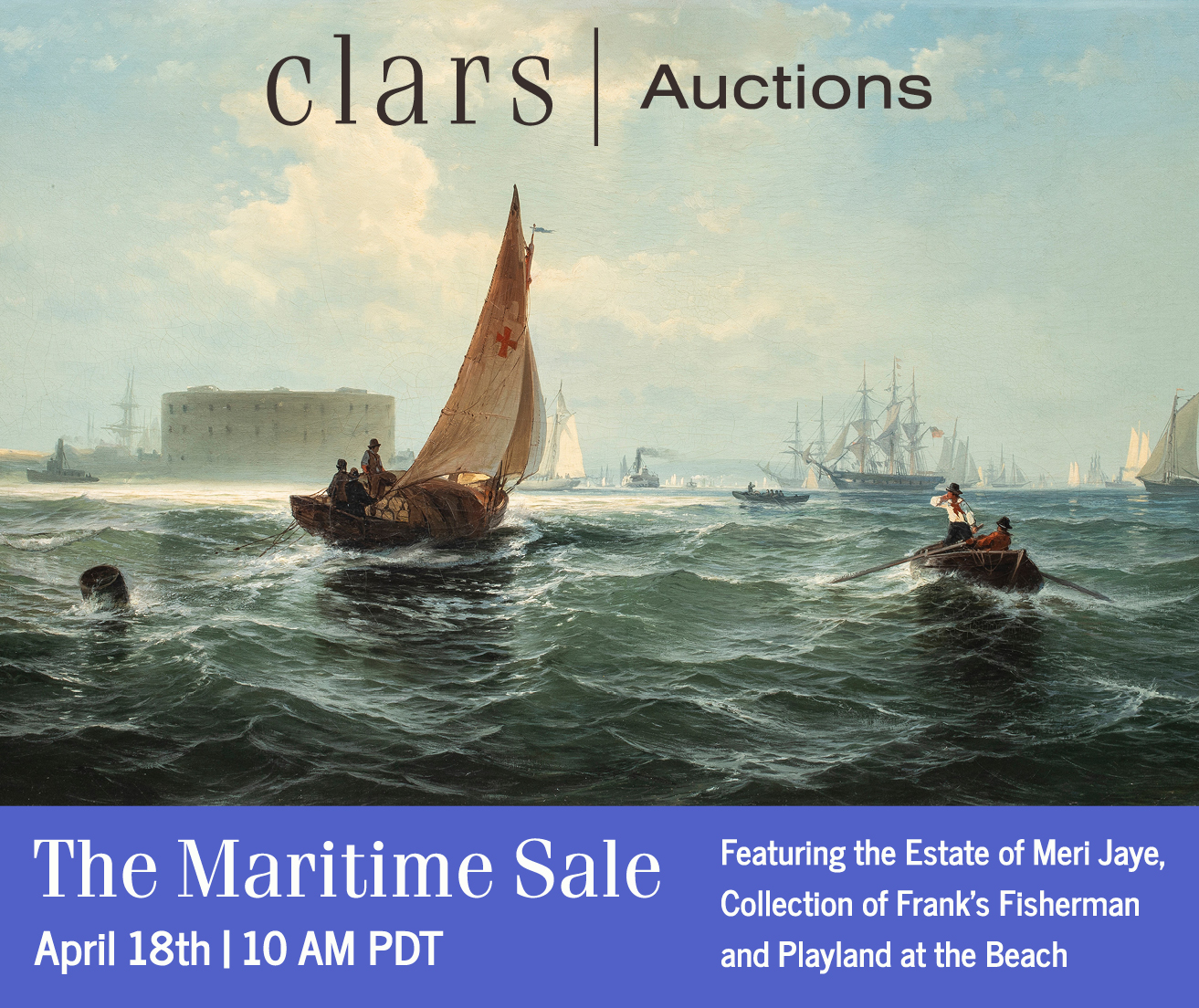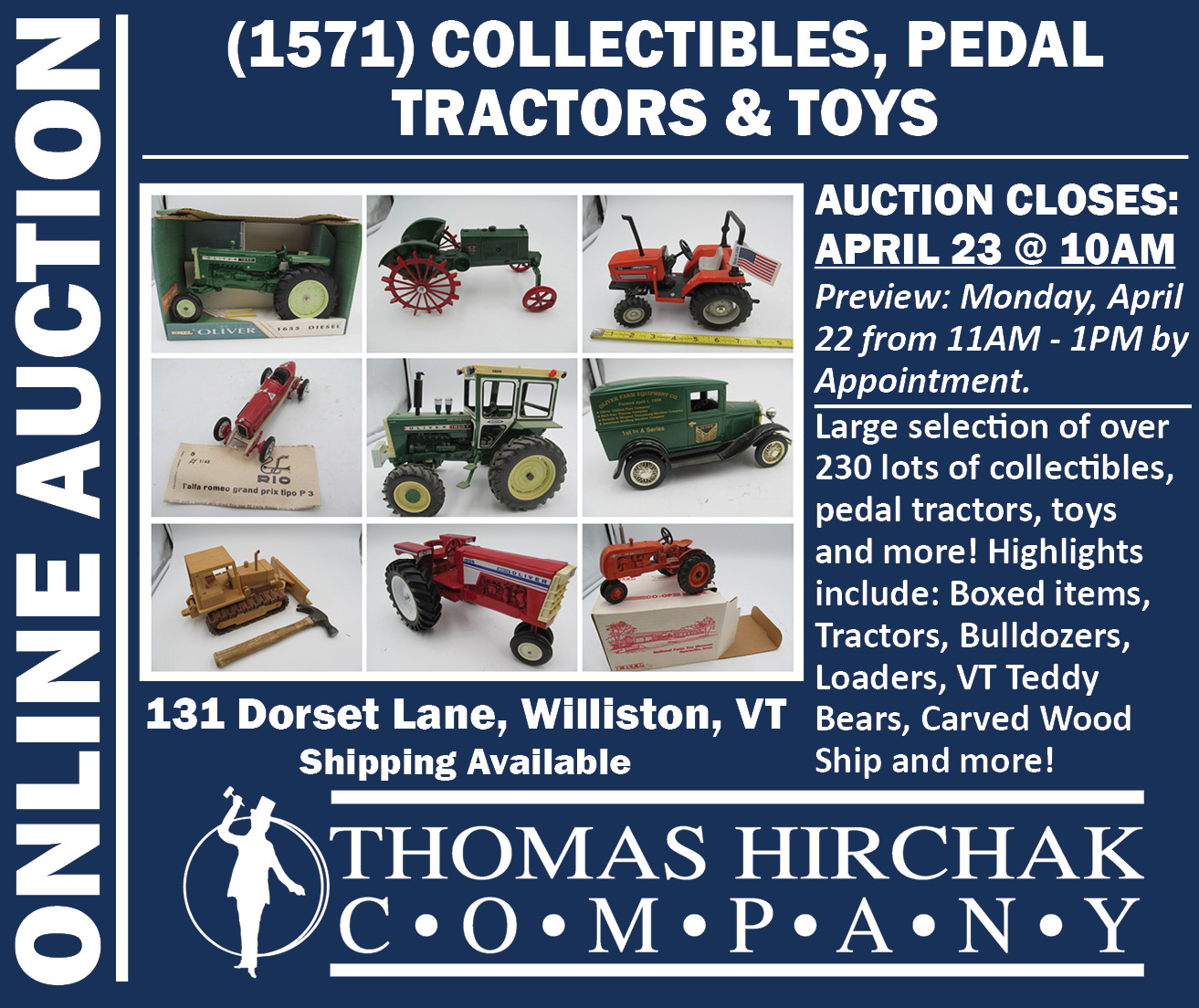Ships, Clocks, and Stars: The Quest for Longitude
December 4th, 2015
Mystic Seaport, Mystic, Connecticut
41 degrees, 21 minutes, 20 seconds North by 71 degrees, 57 minutes, 50 seconds West. This is the global “address” of Mystic, Connecticut. Many of us know, from reading Dava Sobel’s 1995 best-selling book Longitude, that finding Mystic was not so easy for ship captains before John Harrison’s persistent efforts during the 18th century to develop a clock accurate and reliable enough to assist in determining longitude at sea.
Motivating Harrison’s inventions was the passage of the 1714 British Longitude Act. Last year, the National Maritime Museum in Greenwich, England commemorated the 300th anniversary of the act by mounting a comprehensive exhibit and publishing a related book, Finding Longitude, by Richard Dunn and Rebekah Higgitt. More than half of the objects from that exhibit are on display at Mystic Seaport until March 28, 2016. The exhibit then travels to Sydney, Australia before the artifacts return to the museums and private collections that lent them.
 The new book is not an exhibition catalog—sadly, one was not produced—but it greatly expands and updates Sobel’s narrative. The authors do include photos and descriptions of many objects from the exhibit as they recount the ocean-navigation background before Harrison, the inventor’s decades-long struggles, and the several decades after Harrison’s death when marine chronometers eventually became affordable and in widespread use.
The new book is not an exhibition catalog—sadly, one was not produced—but it greatly expands and updates Sobel’s narrative. The authors do include photos and descriptions of many objects from the exhibit as they recount the ocean-navigation background before Harrison, the inventor’s decades-long struggles, and the several decades after Harrison’s death when marine chronometers eventually became affordable and in widespread use.
There are key elements of Sobel’s book that may need new understanding. While deep-water navigation before the 19th century was difficult, thousands of voyages of trade and discovery were successfully completed by European vessels using the old methods. Ships from Spain, Portugal, the Netherlands, France, and England all sailed the globe, and most returned to their home ports using instruments and reckoning described in the book and exhibit.
The wreck of Admiral Sir Cloudesley Shovell’s naval squadron off the Isles of Scilly in September 1707 is barely mentioned in accounts of the lobbying for the Longitude Act approved seven years later. Despite the great loss of ships and lives, including Shovell’s, accounts of the disaster were minimal at the time and nonexistent during the Longitude Act’s consideration. Stronger evidence points to the efforts of Humphry Ditton and William Whiston, who hoped to earn the substantial prize money with their impractical scheme to regularly fire signal rockets from land and sea locations. No matter who might have earned the prize money, the Longitude Act was an early example of long-term government encouragement of technological advances, an issue still debated today but probably vital in that era when overseas commercial and military affairs were tied directly to successful navigation.
Perhaps the most significant difference from Sobel’s account involves astronomer Nevil Maskelyne, who was not the implacable foe of Harrison and the “villain” of the inventor’s story. There is ample evidence that this public servant actively supported the development of the highly accurate timepieces that underpinned one solution to the longitude problem. A 1786 “interval timer” or early stopwatch belonging to Maskelyne is on display. We are reminded that, even with chronometers, a ship’s position could not be established and confirmed without concurrent celestial observations, mathematical computations, and the use of thick books of complex astronomical tables prepared by observatories. An American, Nathaniel Bowditch, is famous for The New American Practical Navigator, published first in 1799 and then in later editions, which presented corrections to the tables published by Maskelyne.
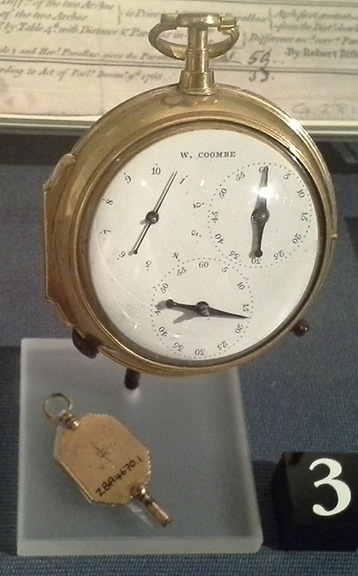
Nevil Maskelyne’s interval timer was made by William Coombe in 1786. Frishman photo.
We learn too about the parallel horological work done by Berthoud, Le Roy, and other horologists outside of England. An unusual but failed Dutch “sea-clock” made by Franciscus le Dieu in 1749 is shown, although without the heated glass dome in which it supposedly would run at a constant temperature. Also, we can examine the post-Harrison decades when the world witnessed a “virtuous circle,” according to Dunn, of global commerce, marine charting, and technological advances in timekeeping.
Visitors to the Mystic Seaport exhibit will view some of the most important objects in this history. On September 17, I was treated to more than two hours of conversation with Dr. Richard Dunn, whose title is senior curator for the History of Science at the National Maritime Museum in England. He was in Mystic to help set up the exhibit and to lecture that evening to more than 200 local supporters.
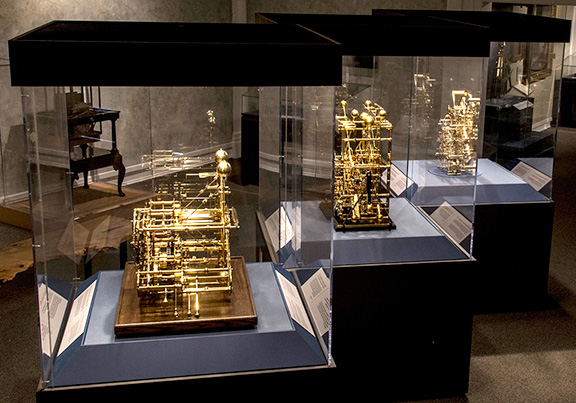
These working replicas of John Harrison’s first three marine clocks are highlights of the Ships, Clocks & Stars exhibit at Mystic Seaport. Photo by Andy Price, Mystic Seaport.
Most iconic is H4, Harrison’s final marine timepiece. H4 proved conclusively that ocean-going clocks accurate to a few seconds per month were possible—despite Isaac Newton’s contrary assertions. (Newton correctly stated that clocks could only “keep” longitude, not “find” it, since if the clock stopped, it had to be reset using other means.) H4 looks like an oversize pocket watch, in surprising contrast to its much larger and highly complicated predecessors. Full-scale replicas of H1, H2, and H3 are running nearby in four-sided clear cases. The restored originals of those clocks remain in Greenwich, England.
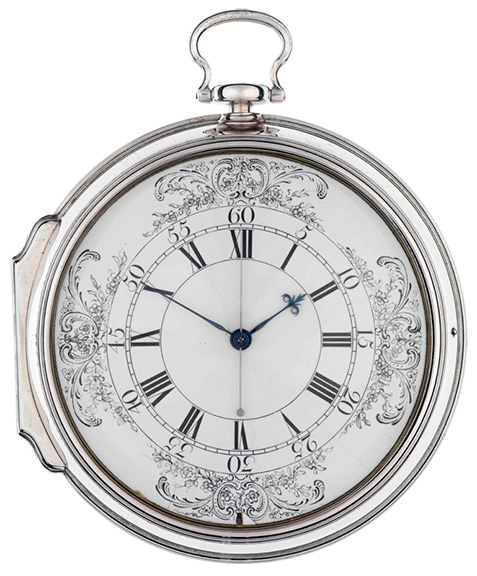
This is John Harrison’s H4 sea watch, 1755-59. A high-energy balance wheel, ticking five times a second, was a key innovation. Image courtesy the National Maritime Museum.
Also nearby is the 1726 long-case clock made early in Harrison’s career and actually signed by his brother James. Its accuracy of a second per month was unsurpassed at its time and for decades to come. Its movement is made mostly of wood, and its design incorporates two of Harrison’s innovations: a low-friction “grasshopper” escapement, and a “gridiron” pendulum to compensate for temperature changes that made ordinary clocks run faster or slower. This clock was lent by English collector John C. Taylor, who also provided the 1777 “Green” marine clock by Thomas Mudge, who was attempting to replicate and advance Harrison’s achievements.
The 1714 Longitude Act required that the “solution” be practical, not just theoretical, and this was the basis for many of the disputes between Harrison and the Board of Longitude. The board members felt obligated to reward inventors whose work could be repeated by others and put into general use. It commissioned watchmaker Larcum Kendall to copy H4, and his copies also are on display. The first, completed in 1769 and known as K1, accompanied Captain Cook on his second and third voyages. Cook called it his “trusty friend” and “never-failing guide.” Kendall’s 1771 K2 traveled with Captain Bligh on the Bounty but remained with the mutineers and only through extremely fortunate circumstances was returned to England in 1840. An Act of Parliament in 1828 ended the official search and prizes, so there can be no further winners today.
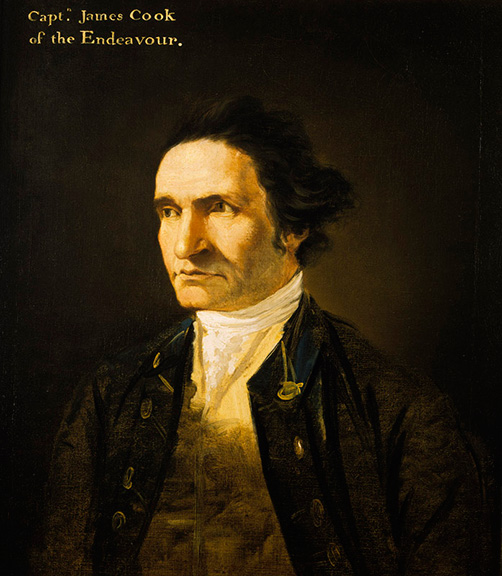
Oil painting of Captain James Cook (1728-1779) by William Hodges. Cook’s voyages of exploration tested methods of determining longitude. Image courtesy the National Maritime Museum, Greenwich, England.
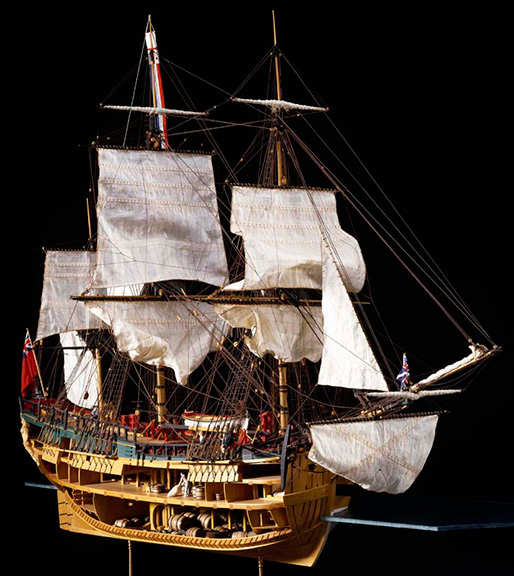
This is a model of Endeavour, the vessel Captain James Cook commanded on his first voyage of exploration in the Pacific. These voyages were opportunities to test the astronomical and timekeeper methods of finding longitude at sea. Image courtesy the National Maritime Museum.
Because celestial observations were required, early examples of the required instruments also are on view with explanations of their function. On-deck sightings using backstaffs, octants, and then sextants provided key data. One of the first sextants, made by John Bird in 1758, is displayed. As with clockmaking, the instruments to make the instruments often were the real story. Sextant making relied on “dividing engines” to mark their tiny detailed scales, and one may be seen in a 1791 portrait of sextant manufacturer Jesse Ramsden.
More dramatically lit oil paintings join the brass, wood, and paper objects on display. The earliest surviving image of Galileo Galilei, from 1602-07, shows the Italian scientist shortly before he discovered the moons of Jupiter. These moons figure prominently in a competing method of longitude measurement. This system employed telescopes pioneered by Galileo to observe those satellites, but it was much better suited to land than to a lurching ship’s quarterdeck.
A 1765 formal portrait by Thomas King of John Harrison shows him holding the Jefferys watch, predecessor of H4. A later engraving of King’s painting replaced the watch with H4. In the shadows behind Harrison is H3 in a large gimbaled frame—now lost, but a hardwood replica of the stand is shown in a case close by. As with many of the objects, I knew this painting only from photographs, so seeing it and others in person was thrilling and revealed many details.
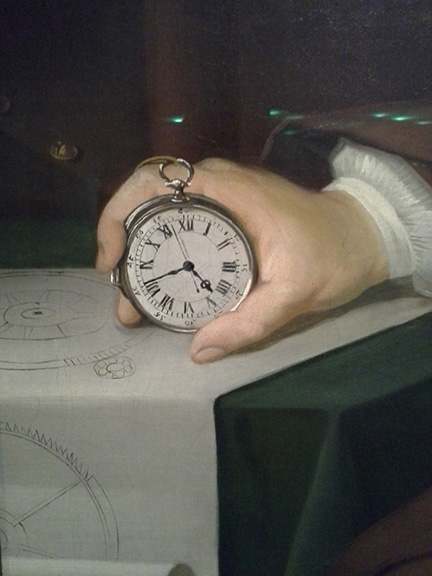
A detail from Thomas King’s 1765 formal portrait of John Harrison shows the John Jefferys watch that Harrison commissioned to test concepts later incorporated into H4. Frishman photo.
Another big and colorful painting was equally exciting. Produced by Robert Davy in 1783, it portrays watchmaker John Arnold with his wife and son, holding the movement of a marine chronometer. Arnold was instrumental in simplifying and producing chronometers in greater numbers. The artwork belongs to the Science Museum in London where it has not often been on public view. Arnold probably was the first to term these timekeepers “chronometers” as they subsequently were known. Also on display is Arnold’s personal copy of The Principles of Mr. Harrison’s Time-Keeper, a 1767 book published by the Board of Longitude so others could understand the concepts.
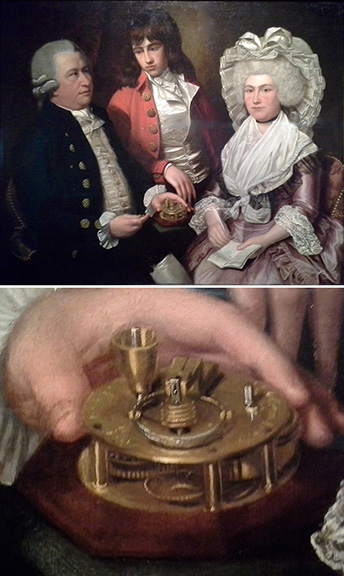
Oil painting of John Arnold with his wife, Margaret, and son John Roger (also a watchmaker), by Robert Davy, 1783-87. Frishman photo. Shown below the painting is a detail of the John Arnold family portrait, showing his chronometer movement. Frishman photo.
Arnold’s rival, Thomas Earnshaw, is equally credited with advancing and standardizing chronometer making by reducing the number of parts to around 130, a tenth of the number needed by Harrison. As required by the Board of Longitude, in 1804 he made an oversize model of his design, which is part of the exhibit. (Arnold’s movement model is lost.)
Working escapement models by later watchmaking teachers and students are highly valued by today’s collectors. Also sought, and often seen at horology and marine auctions, are chronometers from well-known 19th- and 20th-century makers such as Roskell, Frodsham, Mercer, and Kullberg, who followed the first innovators.
Just before my trip to Mystic, I visited the South Street Seaport Museum in lower Manhattan. Although the entire museum had to close its doors after sustaining severe water damage during Hurricane Sandy in 2012, the museum’s historic ships, 19th-century print shops, and visitors’ center have reopened. Researchers can access the important permanent collection and maritime library by request. Some building spaces still are in need of repair, for which the museum was recently awarded $10.4 million dollars from FEMA. A museum spokesperson stated that it is committed to preserving the history of New York’s great port and to maintaining public access to its ships, buildings, and collections.
A few weeks in advance of my visit, I asked to see South Street Seaport Museum’s navigational instruments and timekeepers and paid the required fee. On the day of my appointment, Martina Caruso, collections manager, kindly retrieved and set out about two dozen objects, mostly sextants, on a few tables adjacent to an upper-floor storage area. Some of the most interesting were formerly owned by the Seamen’s Bank for Savings, which failed in 1990 and had its large collection sent by the FDIC to the museum. The label of one sextant, from a Captain R. Golze of Staten Island, claimed that this instrument was specially made for Peary’s expedition to the North Pole. There was just one timepiece, a boxed Elgin “Ship Watch No. 881” (not a chronometer), tagged for the Luckenbach Steamship Company of Brooklyn.
Mystic Seaport, very much open to the public, is a scenic educational destination with far more to see than this special exhibit from London. Information about Ships, Clocks & Stars and the other attractions is available online at (www.mysticseaport.org).

Finding Longitude (Royal Museums Greenwich, 2014) has 255 pages of text and color illustrations to accompany the exhibition honoring the 300th anniversary of the British Longitude Act of 1714.
Bob Frishman, owner of Bell-Time Clocks in Andover, Massachusetts, repairs and restores antique clocks. A Fellow of the National Association of Watch & Clock Collectors, he regularly writes and lectures about the history, science, and cultural importance of timekeeping.
Originally published in the December 2015 issue of Maine Antique Digest. © 2015 Maine Antique Digest

